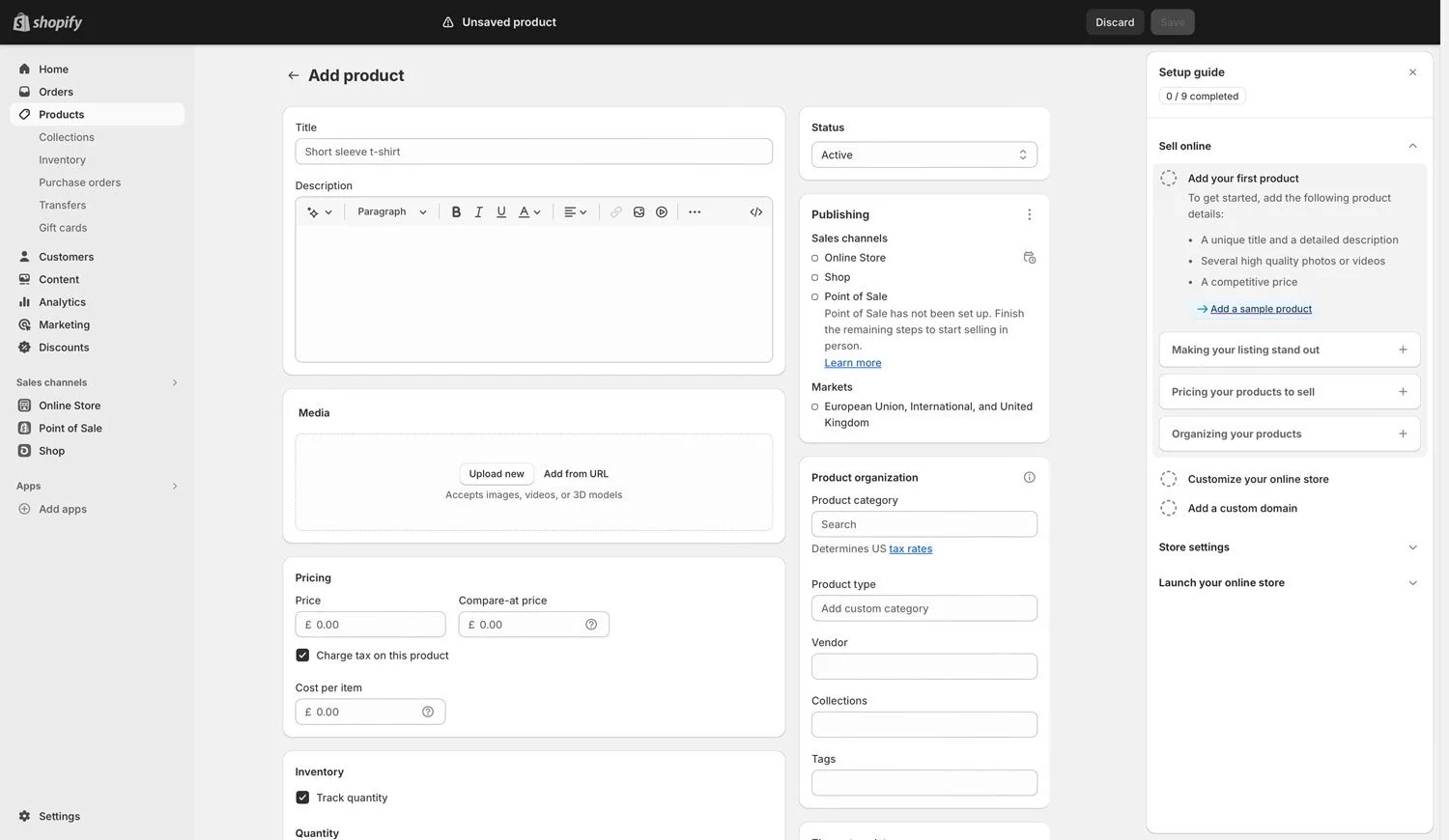Integrating Shopify with Squarespace for Design and Commerce
Building an online store is about more than putting products online. It’s about creating a space that looks intentional and works reliably behind the scenes. That’s where integrating Shopify with Squarespace is complimentary.
Squarespace offers design freedom and a user-friendly interface, while Shopify brings advanced e-commerce tools for managing products, payments, and inventory.
Used together, they give you the best of both worlds: a site that reflects your brand and a system that supports your growth. This guide will show you how to connect Shopify to Squarespace, why the integration works, and the steps to get started.
This post contains affiliate links. If you click and make a purchase, we might earn a small commission at no extra cost to you. We only recommend products we love and trust. Read our affiliate disclosure.
Why Integrate Shopify with Squarespace?
While Shopify is a leading e-commerce platform, its website design options are limited to templates that can be challenging to customize without coding knowledge. On the other hand, Squarespace is a user-friendly interface with a wide range of design options, making it easy to create visually appealing websites without any coding skills. By integrating Shopify and Squarespace, you can find the best of both worlds:
Squarespace for Identity
Squarespace gives you control over how your brand looks and feels online, from design details to storytelling. Everythibg from ypography and imagery to layout and tone can be customized to reflect your aesthetic. For creative businesses, this control matters. It turns your storefront into a branded space where customers understand who you are and what you sell.
Shopify for Commerce
Shopify brings the infrastructure: advanced inventory management, secure payments, and scalable e-commerce tools. It’s the engine behind your store. For product-based businesses, this structure provides stability, no matter how large your catalog grows. While Squarespace has solid e-commerce features, Shopify is often the better choice when logistics and operations demand more power.
Scalable Growth
One of the biggest advantages of integrating these platforms is flexibility for the future. You may begin with a small collection of products, but as your business expands into new offerings or reaches new markets, Shopify’s e-commerce tools grow with you. Pair that with Squarespace’s ability to evolve your design and content, and you have a system that supports both creative freedom and operational scale. Instead of worrying about outgrowing a platform, you can focus on refining your brand and serving your customers.
Your Step-by-Step Guide to Integrating Shopify and Squarespace:
Follow these steps to seamlessly integrate Shopify into your Squarespace site:
1. Sign Up for Shopify
Don’t have a Shopify account? Sign up for a plan that suits your needs.
Once inside, set up the foundations of your store. Add products, write clear descriptions, and organize your inventory.
2. Add Your Products to Shopify
Upload product details into Shopify, including images, pricing, and stock levels. This ensures everything is in place before you connect to Squarespace.
3. Create Your Shopify Buy Button
From your Shopify dashboard, go to Sales Channels and select Buy Button. Choose the product or collection you’d like to feature, then customize its design. When you’re ready, generate the HTML snippet.
4. Embed the Buy Button on Squarespace
Open the Squarespace page where you want products to appear. Add a Code Block, paste in the Shopify snippet, and publish. Your products are now live and ready to be discovered.
5. Customize the Design
Squarespace makes it easy to adjust styling so your embedded products feel cohesive with the rest of your site. Small tweaks (fonts, colors, spacing) help maintain a your brand aesthetic and experience.
6. Sync Inventory and Orders
Shopify will manage inventory, orders, and payments. Regularly check and update product details in your Shopify dashboard to ensure everything runs smoothly.
7. Test and Monitor
Before going live, step into your customer’s shoes. Browse your site, add products to the cart, and complete a test checkout. This walk-through helps you catch and refine any issues before customers interact with your store.
FAQ
-
Because it combines two strengths: Shopify’s advanced e-commerce tools with Squarespace’s design freedom. You get robust functionality for payments and inventory alongside a website that reflects your brand identity.
-
The Shopify Buy Button creates an HTML snippet that lets you embed products or collections directly into your Squarespace site. It keeps your storefront cohesive while Shopify manages the transactions and inventory behind the scenes.
-
Yes. The Buy Button works with all Squarespace templates. If e-commerce is central to your business, choosing a template designed with online stores in mind will give you added flexibility and design options.
-
All inventory, orders, and payments remain managed through Shopify. Squarespace becomes the design layer, while Shopify continues to run the operational side of your store.
-
Yes. This setup is especially useful for businesses that want to start small and scale. Shopify’s features grow with you, from handling larger product lines to supporting advanced apps, while Squarespace allows your brand design to be easily customizable.
-
By integrating the two platforms, you can access Shopify’s extensive app store for tools like email marketing, SEO, analytics, and fulfillment, while keeping Squarespace as your design hub.
-
Many business owners manage the integration themselves using Shopify’s Buy Button. But if you want custom styling or complex features, working with a professional can save time and ensure the setup aligns with your brand.
Concluding Thoughts
Combining Shopify and Squarespace isn’t about choosing one platform over the other, but about combining their strengths. Squarespace gives you a design-led home for your brand, while Shopify provides the infrastructure to manage commerce at scale.
Together, they create a store that looks intentional and functions reliably, so you can focus less on technology and more on growing your business. Whether you’re starting small or preparing to scale, this integration offers a foundation that supports both creativity and sustainability.
You may also like:
10+ Essential Squarespace E-Commerce Plugins
Why Squarespace and Etsy are the Perfect Combination
How to Boost Your Squarespace Website’s Visibility on Google





















